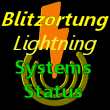elythomaslumber gives a bit of great advice...
Meanwhile...
The BLUE H field amplifier will accept 3 loops. The Red system accepts 2 Standard installation 'omnidirectional' reception of more prevalent, stronger,
Vertically polarized impulses requires at least two (ferrites) mounted horizontally, at 90°... or 2 (round or square, e.g.) wire/coaxial loops mounted 'vertically' to capture the H (M) component of desired vertically polarized impulse. This results in 4 directional lobes of best sensitivity. These 2 antennas are connected to the first two channels of the Blue preamplifier.
If you add a third H antenna on the third channel, and orient the loops at 120° DELTA (or 60°, as some would reference) you now have 6 lobes of best sensitivity, and would improve 'omnidirectional' sensitivity slightly over a 90° pair. This also affords a slight improvement in 'selectivity', in that now you may be able to adjust gains/thresholds/orientation to aid in minimizing an interference signal, in some cases, as my location, for example.
Part of the
future implementation,
and for experiment, is detecting and locating
"Horizontally" polarized strokes. This is one reason for the third H field channel.. to capture the H(M) component of
Horizontally polarized impulses. This requires a ferrite to be mounted 'Vertically" or a wire/coax loop to be mounted Horizontally... and then
connected to the third channel. The first and second channels would then be 'standard' 'vertically' polarized antennas at 90°
A single omnidirectional vertically mounted E probe/Amplifier can be added to detect the 'E" component (electrical) of the most common vertically polarized impulses.
An important note here: BLUE SYSTEM - The 3rd channel of H field amplifier (on the controller) and the single E field amplifier share the same ADC.... (RED system operators with E field should be familiar with this confusing operation)... which means basically the 'lowest threshold' on either channel (H3 or E1) will be the threshold of the other ,,, you can follow our struggle with this a couple of years ago when E was added to RED... we finally figured it out... at this board:
http://www.wxforum.net/index.php?topic=22710.0





 in the back but I still receive a lot of signal from the south direction. At the moment there is low activity in Europe but when comming closer to Italy Spain, France... I'm always on page 1 - 3 seen on the station-list (
in the back but I still receive a lot of signal from the south direction. At the moment there is low activity in Europe but when comming closer to Italy Spain, France... I'm always on page 1 - 3 seen on the station-list ( ). I recommend also to start with automatic settings. If you start with manual settings you will have too many variables changed at the same time.
). I recommend also to start with automatic settings. If you start with manual settings you will have too many variables changed at the same time.
